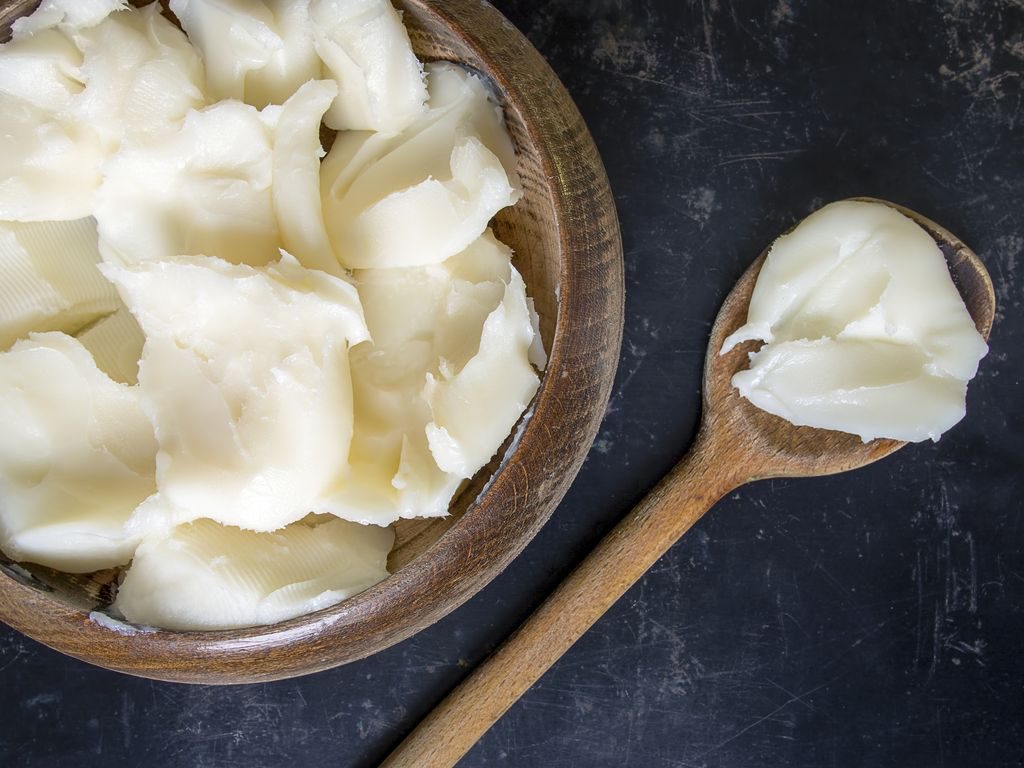Lard
The lard is obtained from loose pork fat: it is an oily and compact paste ideal for traditional sweet and savory doughs.

Lard is an animal fat obtained from pork, widely used in the kitchen for various purposes: both for frying and for giving body and mass to baked goods, improving their leavening, in sweet and savory doughs. Its presence is a constant in traditional recipes, although lately there is a tendency to replace it with lighter fats.
Difference between pork lard, leaf lard and lardon
Usually the lard is obtained from pork fat, thanks to the fusion of the more fibrous parts of the pig’s back fatty tissue such as rind, and once solidified it takes on a solid and creamy appearance, white in color, practically odorless when cold.
The difference with lardon lies in the part of fat from which it is obtained and from the process immediately: lardon is in fact obtained with back fat, salted and left to mature. The leaf lard, on the other hand, derives from the dissolution of the adrenal fat and without the rind of the pig: it can be mixed with lard or used alone to season the ham, at one time it was also used for non-culinary uses, such as ointment or for the waterproofing of boots.
Uses and recipes with lard
Traditional Italian cuisine includes many recipes with lard, both sweet and savory. One of its most common uses is in addition to the doughs of savory pies and wraps, as in the case of the famous Romagna piadina, the Modena’s crescentine (or tigelle), the Neapolitan casatiello and the taralli (in this case the leaf lard is also used, in according to local variations), but also for sweet doughs, such as shortcrust pastry for the Neapolitan pastiera. Finally, frying in lard ensures a crunchy and tasty result!
For those who want to make homemade lard, the preparation is very simple, you just need a little patience: just cut it into small pieces, dip it in cold water and let it cook for several hours in order to melt it, being careful not to burn it .
How to replace lard
Culinary habits have changed a lot compared to those of the past tradition, so it is easy that fat of vegetable origin or lighter in weight is preferred to lard: one of the most immediate alternatives is the use of butter or olive oil, although it is necessary to pay attention that they have different smoke points when used for frying. To obtain a flatbread without lard you can use two tablespoons of olive oil.
Vegetable lard is basically margarine, a product of vegetable origin, yes, but highly refined and processed (it is the hydrogenated fat par excellence), and therefore not on a par with healthier fats such as olive oil.
Nutritional values of lard
Lard is an ingredient known to be particularly fat, as well as tasty: 100 grams of lard contain 892 kcal and 99 grams of fat, of which almost half are saturated fat. In the kitchen, moderate use is recommended, especially in the presence of vascular diseases and cholesterol.




